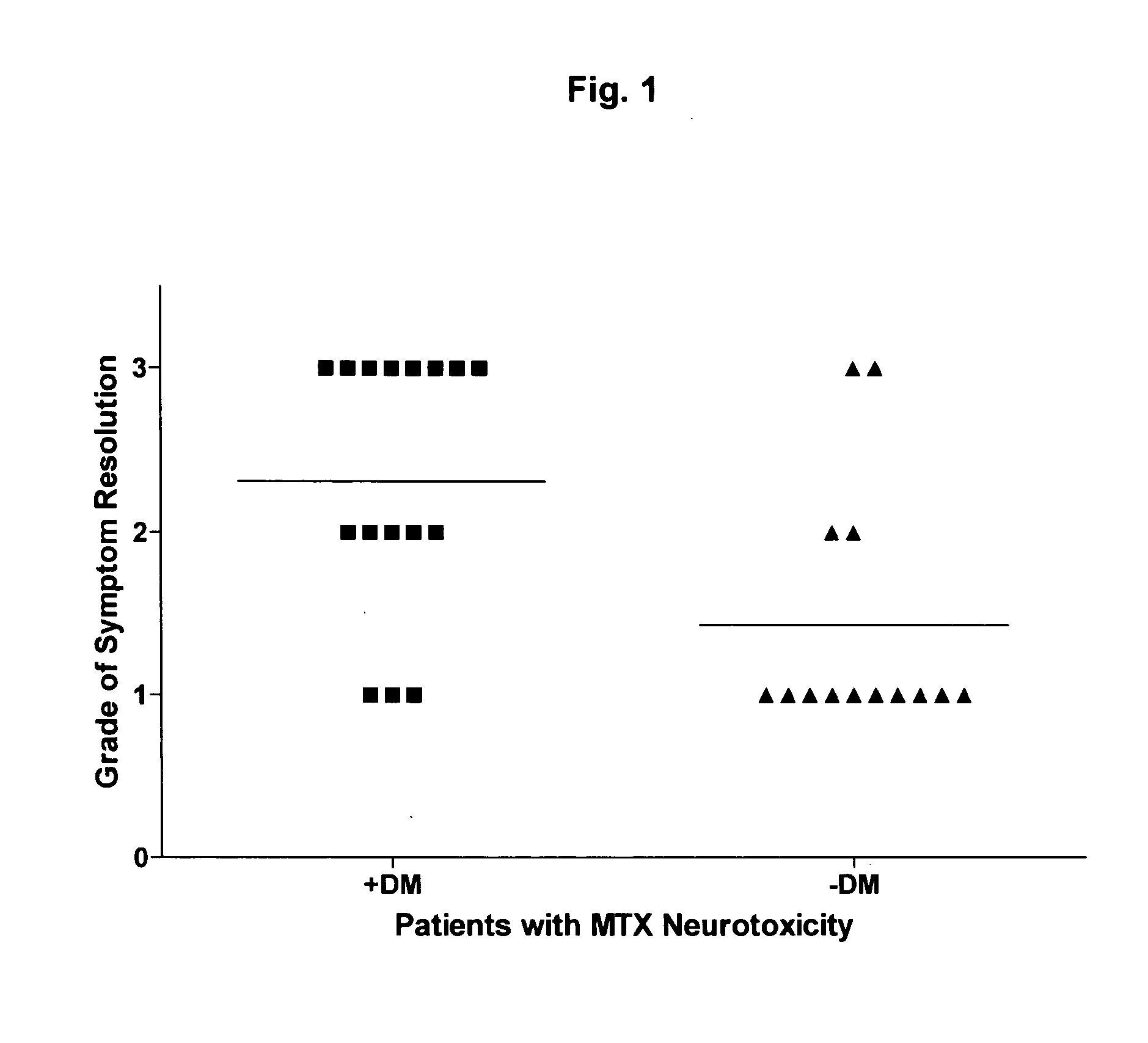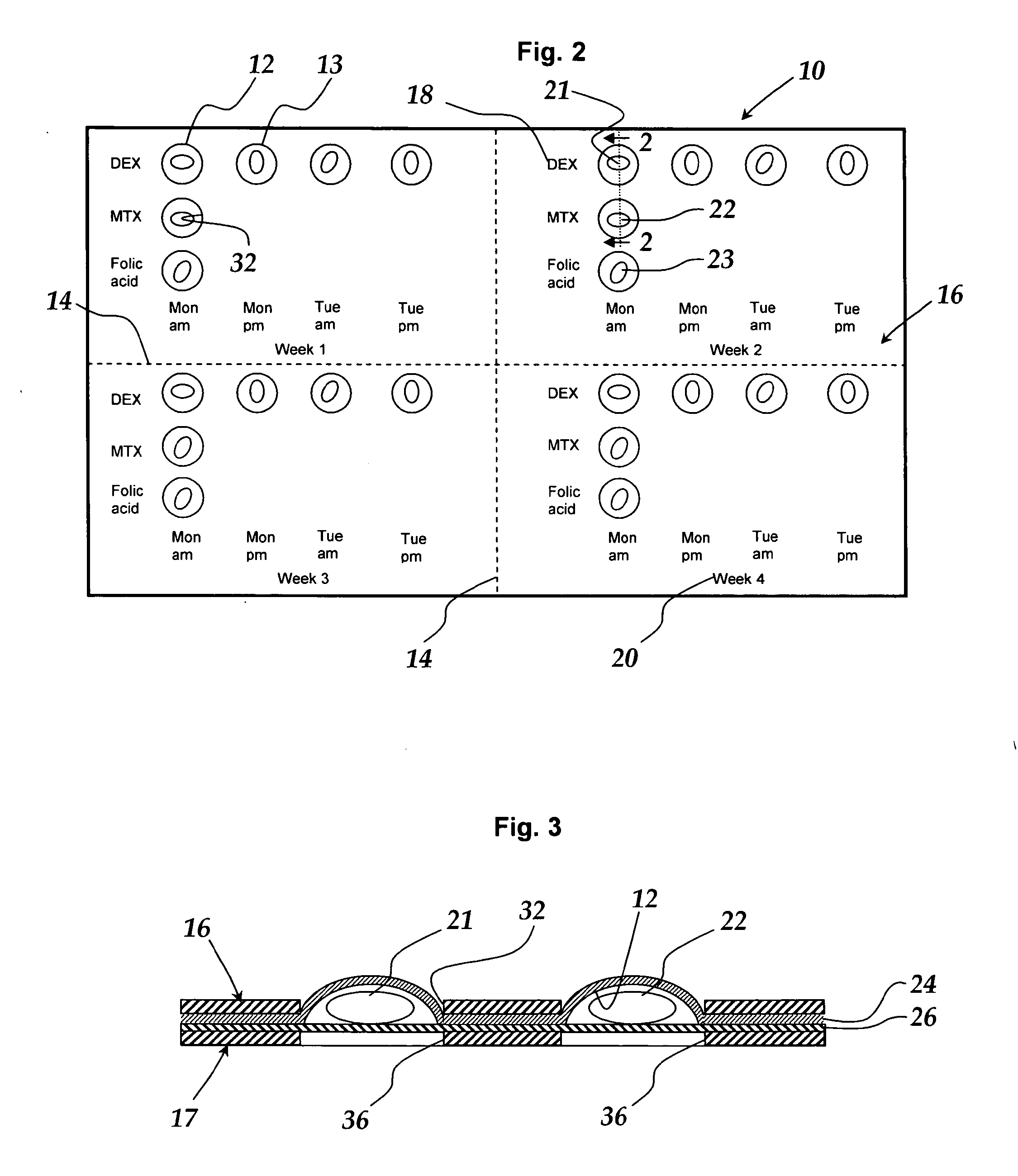Treatment of antifolate neurotoxicity
a neurotoxicity and antifolate technology, applied in the field of treatment of antifolate neurotoxicity, can solve the problems of similar toxicity and hammer the development and use, and achieve the effects of preventing, reducing, and/or eliminating the toxicity associated with hammering the development and us
- Summary
- Abstract
- Description
- Claims
- Application Information
AI Technical Summary
Benefits of technology
Problems solved by technology
Method used
Image
Examples
example 1
Patient with AF-NT Treated with an NMDA Antagonist According to the Invention (Table V)
[0098]A 32 year old male with non-Hodgkin's lymphoma was treated with 12 mg intrathecal MTX and 2 days later developed headache, dysarthria, nausea, weakness and asthenia. The patient was treated once with 1 mg / kg dextromethorphan. His symptoms began to improve after 3 hours, and the duration of his symptoms was 24 hours. He had a grade 3 symptom resolution.
example 2
Patient with AF-NT Treated with an NMDA Antagonist According to the Invention (Table V)
[0099]A 15 year old male with acute lymphoblastic leukemia was treated with 12 mg intrathecal MTX and 100 mg / m2 intravenous MTX. He developed a left hemiparesis 7 days after treatment and was treated once with 2 mg / kg dextromethorphan. His symptoms began to improve after a half-hour, and the duration of his symptoms was 6 hours. He had a grade 3 symptom resolution.
example 3
Patient with AF-NT Treated with an NMDA Antagonist According to the Invention (Table V)
[0100]A 19 year old male with acute lymphoblastic leukemia was treated with 7.5 mg intrathecal MTX (via an Ommaya device) and 1 g / m2 intravenous MTX. He developed a right cranial nerve VII palsy, right hemiparesis, and dysarthria 12 days after treatment and was treated with 1 mg / kg dextromethorphan three times on a single day. His symptoms began to improve after 3 hours, and the duration of his symptoms was 10 days. He had a grade 1 symptom resolution.
PUM
| Property | Measurement | Unit |
|---|---|---|
| Time | aaaaa | aaaaa |
| Time | aaaaa | aaaaa |
| Dimensionless property | aaaaa | aaaaa |
Abstract
Description
Claims
Application Information
 Login to View More
Login to View More - R&D
- Intellectual Property
- Life Sciences
- Materials
- Tech Scout
- Unparalleled Data Quality
- Higher Quality Content
- 60% Fewer Hallucinations
Browse by: Latest US Patents, China's latest patents, Technical Efficacy Thesaurus, Application Domain, Technology Topic, Popular Technical Reports.
© 2025 PatSnap. All rights reserved.Legal|Privacy policy|Modern Slavery Act Transparency Statement|Sitemap|About US| Contact US: help@patsnap.com


